 Last week I chaired a cracking event talking about the toolkit that the modern PR professionals need to be successful.
Last week I chaired a cracking event talking about the toolkit that the modern PR professionals need to be successful.
We hosted it in partnership with the good people at Prime Research. The event was part of AMEC’s Measurement Month and the inspiration behind the topic is that PR is changing and therefore the measurement of public relations also needs to change if it is to remain relevant and meaningful.
Public relations has changed rapidly over the last few years and to quench this thirst of innovation a whole bunch of new products of have come on to the market that should make the modern PR professional's life much easier, and hopefully more time efficient.
Within this context the Met Office's Dee Cotgrove talked about how, in lots of ways, PR is going back to the future in terms of required skill sets; the reason public relations should be in such a good place right now is because many of the skill sets the PR people have always possessed are more in demand than ever.
Back to the future? Why PR people are more in demand than ever before:
• They have emotional and rational engagement with your audience
• Modern PR practitioners must understand the importance of design, data and content creation skills
• They can relate communications objectives with internal stakeholder’s objectives
• Young people are well equipped to thrive in the modern communications workplace
To put Dee's thoughts into some context, Ketchum's Stephen Waddington gave his view on how public relations has evolved:
The evolution of public relations:
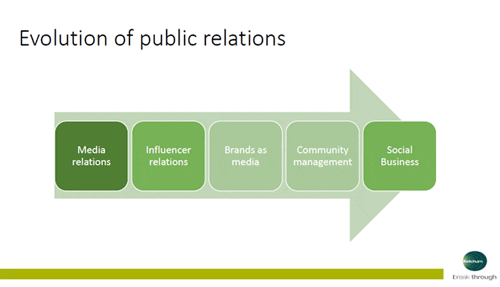
Stephen also discussed Ketchum’s approach to social media planning and insight:
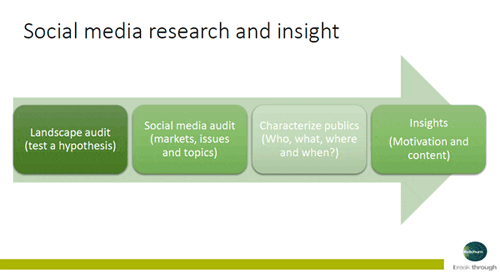
And finally, his approach to how to map PR workflow:

Stephen's advice for PR people today was that listening to publics has never been easier, thanks to social networks and tools. However, it's very important that you develop a rigorous process. His newly updated book and website prstack.co is a good place to start for PR tools and how-to case studies.
You’ll also find a list of freemium tools mapped against workflow at wadds.co.uk/prtoolbox
Next up was Prime Research’s Richard Bagnall who reminded us that digital and social media has changed the way audiences behave. For example, 60% of UK online news users only glance at the headlines (source Reuters Institute for the Study of Journalism Digital News Report 2014) and therefore the way PR people measure their success must also change.
Richard discussed the necessity for PR people to measure both the outputs and outcomes in your public relations campaigns.
Output numbers are losing relevance
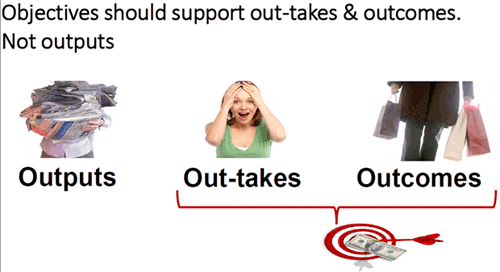
When putting together your PR toolkit it is imporant to start with your wider organisational and communication goals and not concentrate on what the latest tool can measure. Otherwise you end up measuring what is easy to measure, rather than measuring what is important to measure.
The need to ensure that your PR planning is sufficiently robust and front loaded:
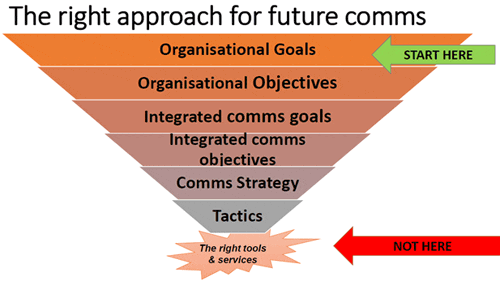
Richard is a board member of AMEC, who have produced a Social Media Measurement Framework tool that is freely available. (See www.bit.ly/smmframework)
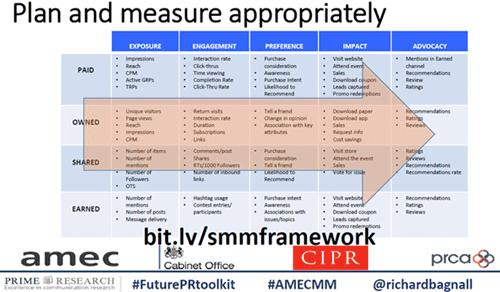
Finally, lissted’s Adam Parker talked to us about what influence really means, and actually what it doesn’t mean. I've attempted to breakdown his briilliant 20 minute presentation into a few bullet points below.
What influence means, and what it doesn't mean:
- Producing accessible content about a topic and generating reaction to it isn’t necessary, or sufficient to be influential.
- To measure influence you need to know specifics about actions, outcomes or opinions.
- Influence is dynamic, networked and impacted by proximity, timing and trust.
- Influencer tools are just attempting to capture signs of influence potential.
- It’s a fallacy to make content the starting point for identifying influencers, it leads to gaming, overlooking the quiet, overstating the noisy and including people who don’t influence your target audience.
- Relevance needs to be about the people you’re trying to understand not the content.
- Make sure you don’t overlook your “quiet” influencers.
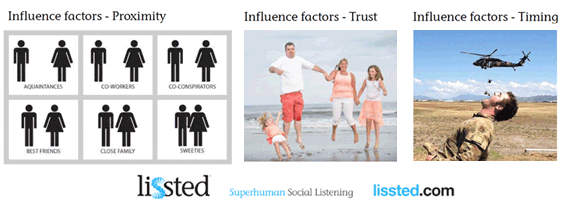
To sum up, Prime’s Richard Bagnall pointed out that PR/comms has changed, the media has changed, audience behaviour has changed and therefore our approach to monitoring and measurement must change.
PR Toolkit from PRmoment on Vimeo.
PR Masterclass: The Intersection of PR and GEO
Join PRmoment for a Masterclass featuring 10 of the industry’s foremost experts. You will walk away with a clear, actionable strategy for adapting your content to an AI-first search environment.
Taking place on Wednesday 25th February in London, both virtual and in person tickets are available.
Early bird ticket sale ends Friday 9 January.
PR MasterclassIf you enjoyed this article, sign up for free to our twice weekly editorial alert.
We have six email alerts in total - covering ESG, internal comms, PR jobs and events. Enter your email address below to find out more:









